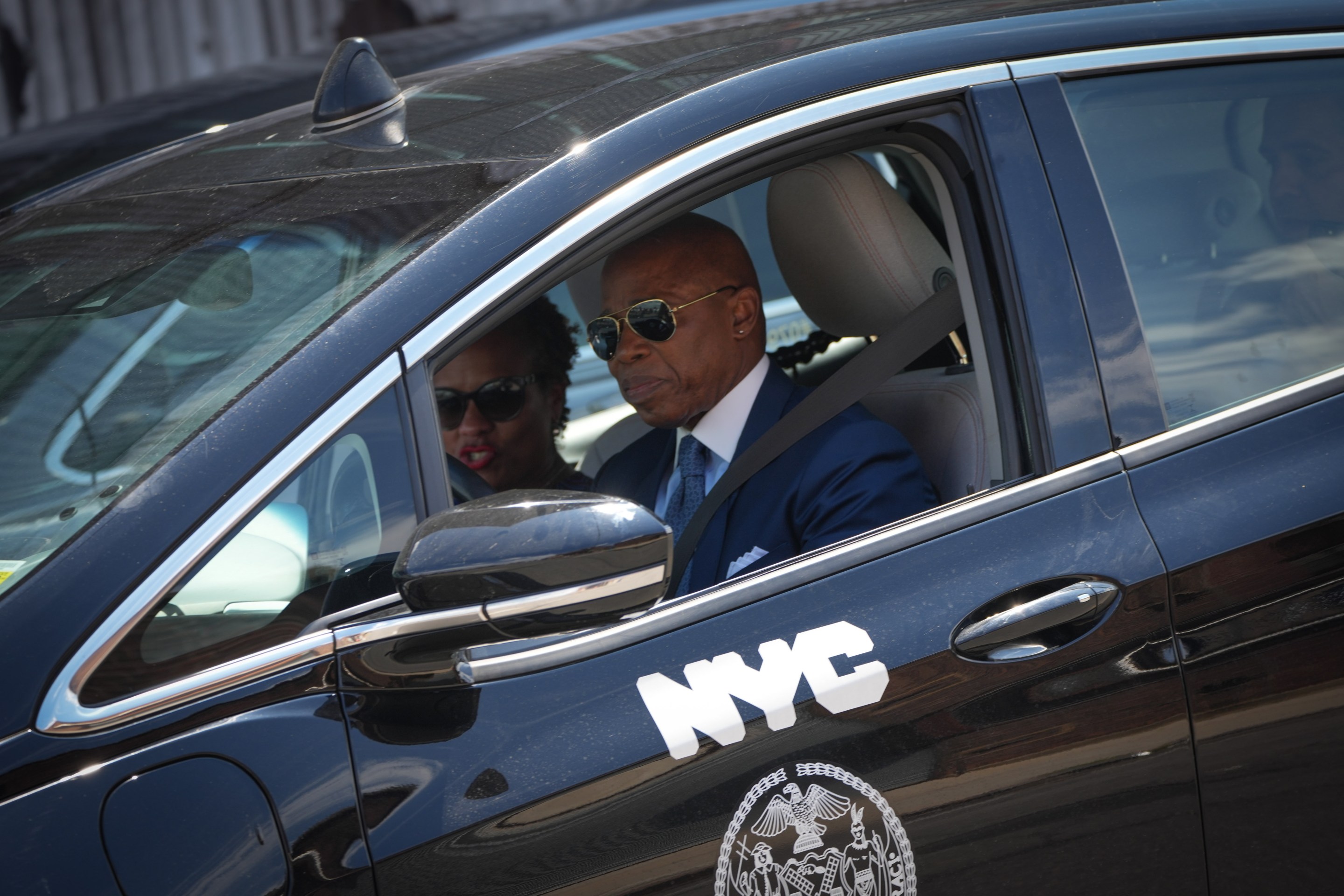A city program putting speed restriction technology on a small number of government vehicles has shown promising results, with drivers speeding rarely and doing less hard braking — but municipal motorists were still able to deactivate the control mechanism hundreds of times during the test's first four months.
Last summer, 50 city cars got the so-called active intelligent speed assistance system, which kicks in when drivers try to go above a set speed and slows the vehicle back down. And on Wednesday, the Department of Citywide Administrative Services, which manages the municipal fleet, said workers using the test vehicles stayed within "speed limit parameters" 99 percent of the time. Those parameters also include speeds above the posted limits.
The 1 percent of cases where drivers exceeded those caps came from initial acceleration, according to DCAS.
One caveat: Drivers can disable the control mechanism entirely for 15 seconds at the push of a button, a button they pressed more than 600 times during the test period, which covered 133,400 miles of travel.
The feature allowing drivers to pause the speed governor "may be helpful in certain hazardous situations," according to the agency's press release, which added that the overriding happened most often during the early weeks as workers were getting used to the new tech.
"DCAS will continue to assess its use and determine what kind of circumstances elicited the override," the agency said in a statement on Wednesday.
Agency reps didn’t say how much the pilot actually reduced speeding, but instead provided average speeds for the 50 cars, which dropped from 26 miles per hour to 14 mph, though some were used on the highway before and during the pilot.
Officials did announce a 36-percent decrease in hard braking incidents as evidence that the technology made drivers safer.
DCAS tuned the devices to two limits: one at the exact speed limit and another "slightly above," according to spokesman Nick Benson. They will also test caps below posted speed limits for places like school zones, the rep added.
The project affects just 0.2 percent of city's nearly 24,000-strong on-road fleet, which includes SUVs, sedans, pickup trucks, vans, and dump trucks.
Mayor Adams wants to expand the anti-speeding devices to all light- and medium-duty vehicles in the coming years, and Hizzoner has also successfully trimmed the number of total vehicles during his first year in office.
Adams plans to mount the technology on 25 more vehicles by the end of February, NY1 reported, and the city has applied for federal grants to pay to install it on 7,500 vehicles over three to four years.
The retrofits cost around $1,420 per vehicle, but the city could cut costs by buying cars that already come equipped with intelligent speed assistance, Benson said.
"This pilot helped ensure almost all drivers with this technology in their cars complied with local speed laws — undoubtedly making our city safer," Adams said in a statement on Wednesday.
Cars that got the speed restricting upgrades are assigned to nine city agencies: DCAS, the Parks Department, Department of Corrections, Department of Transportation, Department of Environmental Protection, the Business Integrity Commission, Taxi and Limousine Commission, Housing Preservation and Development, and the Mayor’s Street Condition Observation Unit.
The mayor's own police detail and first responder vehicles are exempt, and Adams justified the carve-out for himself last year, saying he needed to travel at "a non-traditional rapid speed" to get to emergencies quickly.
Advocates praised the results and supported the city's moves to expand the program.
“Lower speeds save lives. The results from DCAS’s intelligent speed assistance pilot shows this technology works to reduce dangerous driving and keep New Yorkers safe,” said Danny Harris, executive director of Transportation Alternatives. “We urge the city to expand the use of intelligent speed assistance to the entire city fleet and set a model for cities and states across the country.”
The intelligent speed assistance pilot will last through early 2024 and DCAS will write up a report on its result with the U.S. Department of Transportation.
Adams tasked DCAS with reducing its fleet size by 855 out of a total of 24,526 on-road vehicles last spring, and the agency phased out 862 vehicles, leaving 23,664 by the end of 2022, officials told Streetsblog last week.
"We set a very aggressive target and we’re exactly where we want to be. We’ve identified all the vehicles and we’re currently auctioning off the remaining vehicles that we’ve identified," DCAS Commissioner Dawn Pinnock told Streetsblog at a Jan. 4 press conference about fleet electrification.






